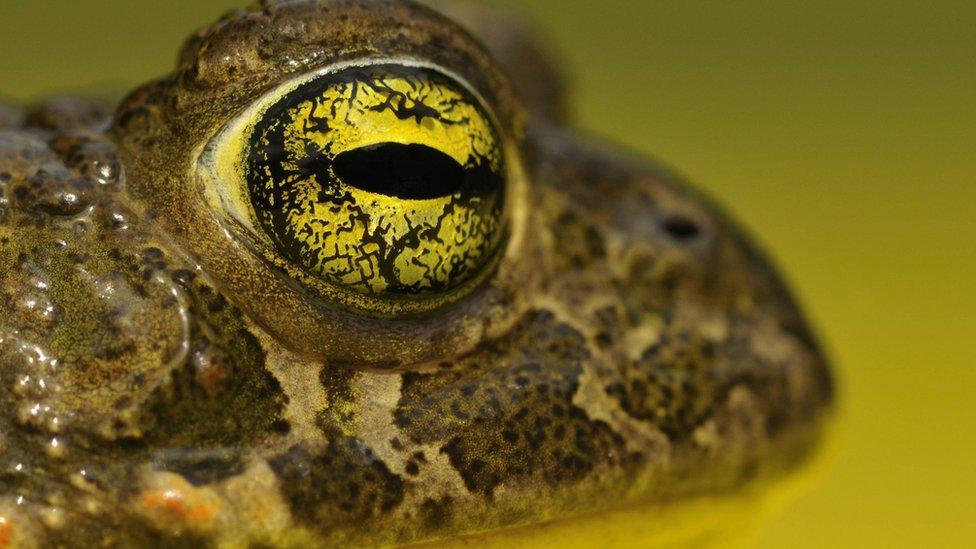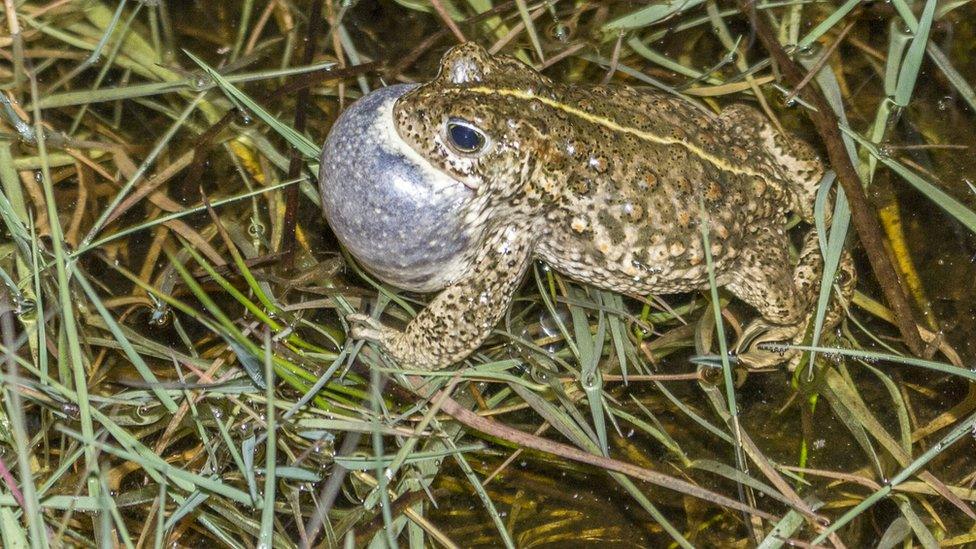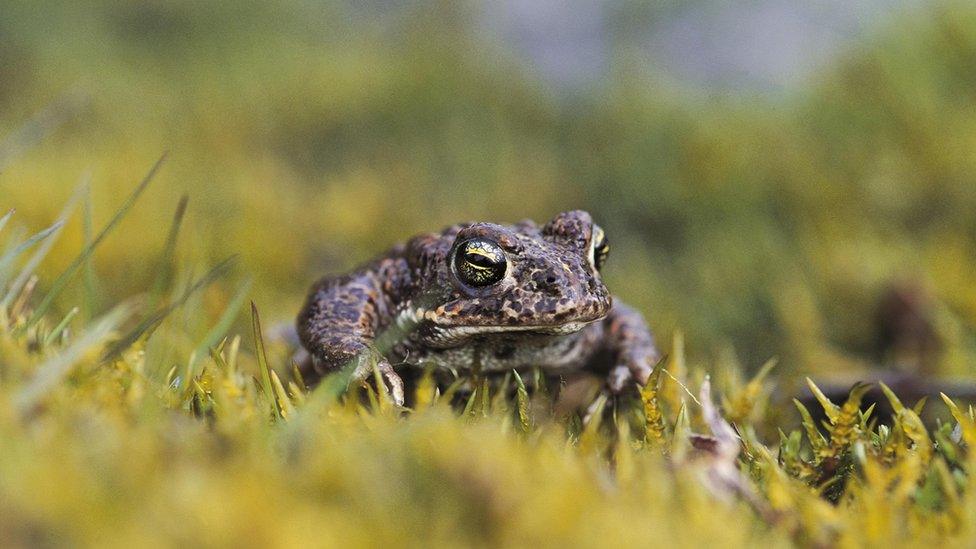Natterjack toad numbers increase fivefold on Mersehead reserve
- Published

Natterjack toad numbers have increased fivefold on an RSPB Scotland reserve during the course of a three-year conservation project.
Work started at Mersehead in Dumfries and Galloway in 2013 after severe winter storms hit the area.
They had destroyed sand dunes which the rare amphibians often hibernate in and there were concerns for their survival.
At the start of the project about 30 breeding males were counted on the site but numbers have now reached 150.
The Solway Firth is the only place natterjacks can be found in Scotland.
Works to help boost their numbers at Mersehead included the creation of shallow ponds for the toads to breed in.
RSPB Scotland set up a "mugshot database" of natterjack toad photographs during its surveys, to ensure that the same individuals were not being counted night after night.

Each toad carries a unique wart pattern and yellow "racing stripe" on its back which together act much like a human fingerprint.
James Silvey, RSPB Scotland's species and habitats officer, said: "It's fantastic to see that the natterjack population is responding to the habitat management we've put in place.
"The evidence of toads breeding in three of the five ponds we made for them in 2015 is a real highlight.
"Natterjack populations are declining across most of their range in Scotland due to climate change and inappropriate management, making the population at Mersehead all the more important."
He said they hoped to see numbers increase further and more work is planned to expand the habitat available to the toads.
- Published6 February 2017
